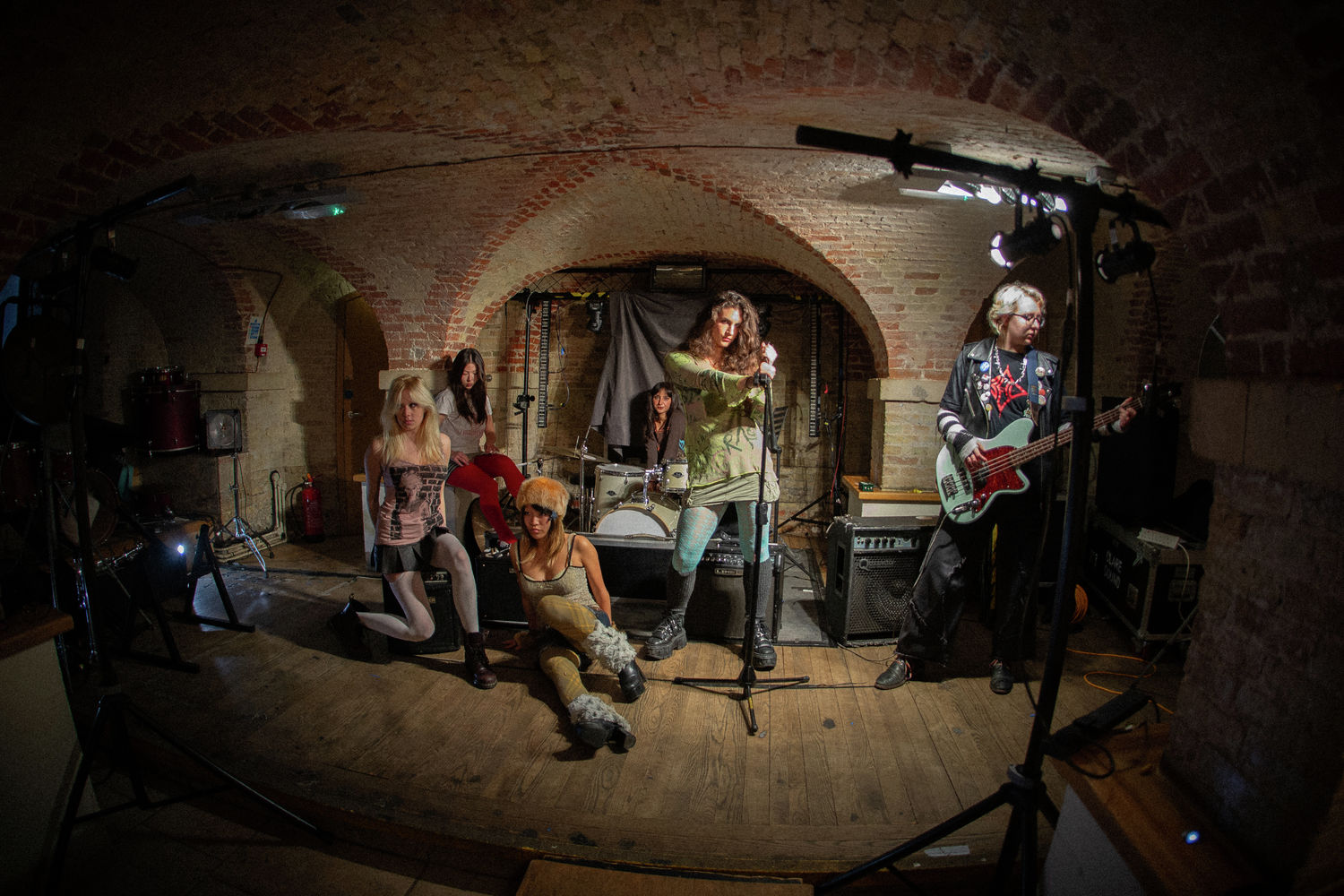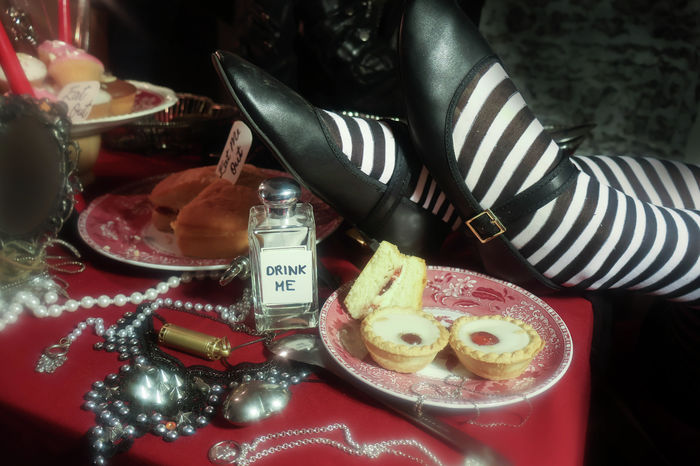In 1976, the London punk zine Sniffin’ Glue declaratively stated: “Punks are not girls.”
The punk era saw the rise of several iconic bands such as The Sex Pistols, The Clash, and The Ramones – to name a few – but they all had one thing in common: they were all male. Riot Grrrl began as a demand for a safe and inclusive space for women within the fractured punk scene.
Before the success of its music, the Riot Grrrl movement took shape through physical newsletters and zines used to spread its message. It was in Bikini Kill’s publications that terms such as ‘girl power’ (which would later be mainstreamed by the Spice Girls) were coined. Riot Grrrl was originally a movement fostered through these grassroots publications, spreading messages of women’s empowerment and expressing indignation. Tobi Vail, a key figure in the creation of the Bikini Kill fanzine, wrote: “I feel completely left out of the realm of everything that is so important to me … and I know that this is partly because punk rock is for and by boys.”
This frustration fuelled Tobi Vail and Kathleen Hanna’s dissemination of their zine, which would later evolve into one of the foremost Riot Grrrl bands, Bikini Kill – a four-piece band fronted by Hanna and originating from the Pacific Northwest scene in the early 1990s. At gigs, Hanna would call “all girls to the front” – initially a safety measure to prevent women from being trampled in mosh pits, but also a phrase emblematic of the movement’s agenda: to allow women to occupy the highest spot of visibility. Men could be in the room, but they could never dominate it.
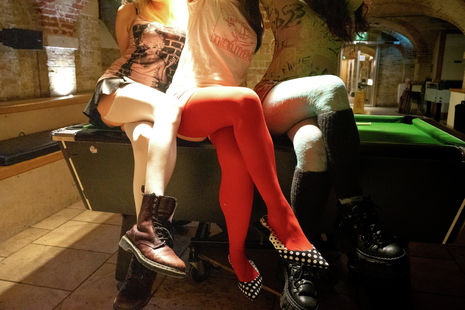
At the centre of the Riot Grrrl movement was its distinct fashion. In the ’90s, Riot Grrrl fashion was not merely decorative; though inspired by punk rock style, the movement reclaimed girlishness, incorporating unabashedly feminine elements such as pigtails, baby tees, sequins, and hearts. It embraced the ‘Grrrl’ part of its title – rooted in the idea that women often felt most empowered when they were girls, before their identities became shaped by expectations and beauty standards.
Ironically, however, Riot Grrrl became remembered more for its visual appearance than for its sound or message, and by the late ’90s it had largely fizzled out. Kathleen Hanna did, however, go on to form another band, Le Tigre, which gave us iconic songs such as ‘Deceptaton’. Much of Riot Grrrl’s fading relevance is attributed to the diversion of attention toward the grunge scene, with the explosion of (male) bands like Nirvana and Pearl Jam.
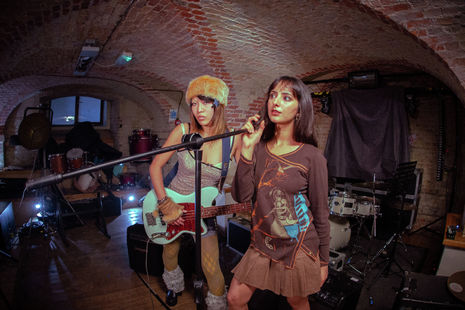
Over the decades, Riot Grrrl has seen peaks and troughs in engagement. Yet, the genre’s politics, aesthetics, and sonic exasperation have been regaining traction online over the past few years – surely fuelled by increasing political division.
I spoke to one particularly active Riot Grrrl band, described as “vanguards of the genre’s new wave”. Talking to the lead singer of t@b grrrl, Gigi Barwald, about the fashion of Riot Grrrl today and the movement’s current state, it became clear that Riot Grrrl is certainly not dead; its relevance has only multiplied with digital forms of messaging and music.
The band started in the same way as the original Riot Grrrl groups, but in digital form. Barwald told me she met her fellow band members through webzines and social media; however, it was after reading Sara Marcus’s book Girls to the Front that Barwald decided to form a band, realising, “If those girls can do it, I can do it.”
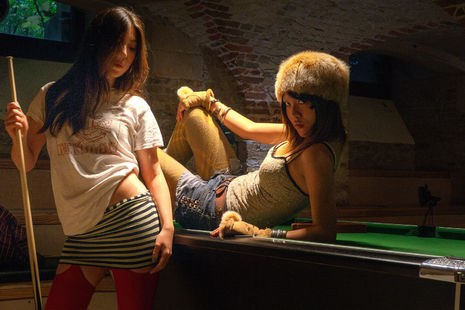
I asked how Riot Grrrl fashion does or does not impact Barwald’s style choices and the visual presentation of t@b grrrl. Barwald described the band’s merch as rooted in the DIY ethos that was so central to the original movement, as she handmakes all the items herself. The merch incorporates key features of punk fashion – plaid, denim, safety pins, and bold colours – but Barwald emphasised that Riot Grrrl is not bound by a dress code: “I think it’s important to recognise that not everybody looks the same. There’s no staple for how a Riot Grrrl needs to dress.”
There has, however, been a clear evolution in Riot Grrrl fashion since the ’90s. Barwald gives one example of how “in the ’90s, girls were writing ‘grrrl’ on their wrists, but now I’m seeing patches and jewellery with ‘grrrl’ on it”. She continues, “I think the point of Riot Grrrl is to be political; it’s more than just a genre – it’s a political movement.” Politics and fashion, regardless of era, go hand in hand – and that’s how Riot Grrrl has maintained its relevance as both a movement and a form of style. She points to one particular t@b grrrl song, ‘so what’, that speaks to this enduring connection, “I talk about dressing however you want … you just have to be authentic to yourself. You can wear whatever you want as long as you’re owning it.”
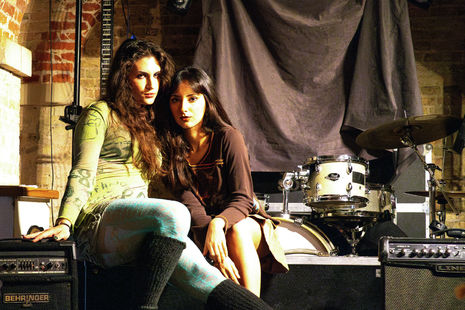
Inevitably, Kathleen Hanna is mentioned in our conversation. Barwald praises her, particularly admiring how Hanna used her stage outfits “to further a political message … like that iconic outfit where she’s not wearing any pants – showing how you can look, but you can’t touch.” Barwald recalls how, at their first gig at a fraternity house, she only wore underwear and wrote ‘grrrl’ across her chest as “an homage to Kathleen [Hanna]”. She describes the empowering feeling of that choice: “We’re all on the same ground level because there’s no stage, but you’re not going to touch me.”
I notice that our conversation – and indeed the movement – seems firmly planted in American soil. Beyond America, can Riot Grrrl resonate with people in smaller cities like Cambridge? “I think [Riot Grrrl] does resonate with people not only in the States, for sure … the major notions of what we’re talking about can be taken in by everyone,” Barwald responds. How would you define Riot Grrrl in 2025 terms? “I think Riot Grrrl 2025 is a place for anyone who’s not a cis-het man to have space in the music scene – to play, to enjoy, to experience.” And surely, we need that space in 2025 more than ever.

